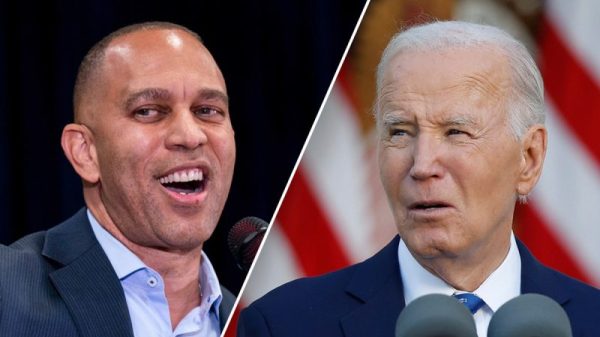The first consideration when writing an article about the most recent mass killing in the United States is what photo to use at the top. Do you use the familiar “police tape in front of a darkened street?” “Police officers standing by car with flashing lights?” As you can see, I chose a less common element of mass-killing iconography, a shelter-in-place warning issued in Lewiston, Maine, after the alleged perpetrator of a shooting rampage there escaped without capture.
There are patterns to these events, patterns that risk collapsing into banality. The humor site the Onion leans into those patterns, each time running a story with the headline “‘No Way To Prevent This,’ Says Only Nation Where This Regularly Happens.”
Such incidents have a relatively small death toll: Roughly 1 in 5,100 American deaths in 2022 were the results of a mass shooting, comparing numbers from the Gun Violence Archive (GVA) and the Centers for Disease Control and Prevention. But the terrifying, terrorizing effect extends well beyond that, in part because cable news coverage of the incidents has increased alongside mass-shooting deaths in recent years.
This year has been an unusually deadly one. The number of mass-shooting incidents tracked by the GVA (which counts any incident in which at least four people are injured or killed in a shooting) was the highest since 2014 for much of the year, falling behind 2021 only recently. The number of fatalities in those incidents, though, has run higher than any of the previous nine years, by a wide margin.
You’ll notice the shift that occurred in 2020. The number of incidents in the first half of the year tracked with years prior, despite the restrictions associated with the coronavirus pandemic. Then, in the second half of the year, they surged. The number of mass-shooting incidents has tracked higher ever since (though the number of gun deaths overall declined in 2022).
You can also see particularly deadly moments on that graphic: the spike in deaths in 2016 that accompanied the mass shooting in Orlando, the one in 2017 that followed the massacre in Las Vegas, the one in 2019 that represents the shootings in El Paso and Dayton, Ohio.
I was curious how news coverage of mass shootings had changed over the period that the GVA has been tracking data. Using closed-captioning data from cable news broadcasts (collected by the internet Archive), I compared the cumulative mentions of mass shootings with the number of deaths from those incidents. (The pattern when compared to the cumulative number of incidents is similar.)
What it shows is that there have been more mentions of mass shootings in recent years relative to the death toll — meaning that as the number of deaths from mass shootings has increased in the past few years, the number of mentions of mass shootings has increased more.
On the static version of that graphic, below, you can see how major incidents contribute to coverage. In 2018, for example, the mass shooting at Marjory Stoneman Douglas High School on Feb. 14 drove both a lot of attention and a new focus on legislation that would limit the availability of guns, keeping the issue in the news for some time.
Notice that the ratio of news mentions to deaths is higher in both 2022 and 2023. Again, there have been more shooting deaths, but this is a measure of coverage relative to those deaths. The highest ratio at this point in the year occurred in 2019, when the shooting in El Paso in particular was folded into the political conversation about immigration and President Donald Trump’s reelection bid.
These mass killings are mundane and still horrifying. The random nature of the attacks and the scale of the deaths that can ensue have an understandably terrorizing effect. And the more deaths that have occurred in the past two years, the more the presence of the events on television has accelerated.


































